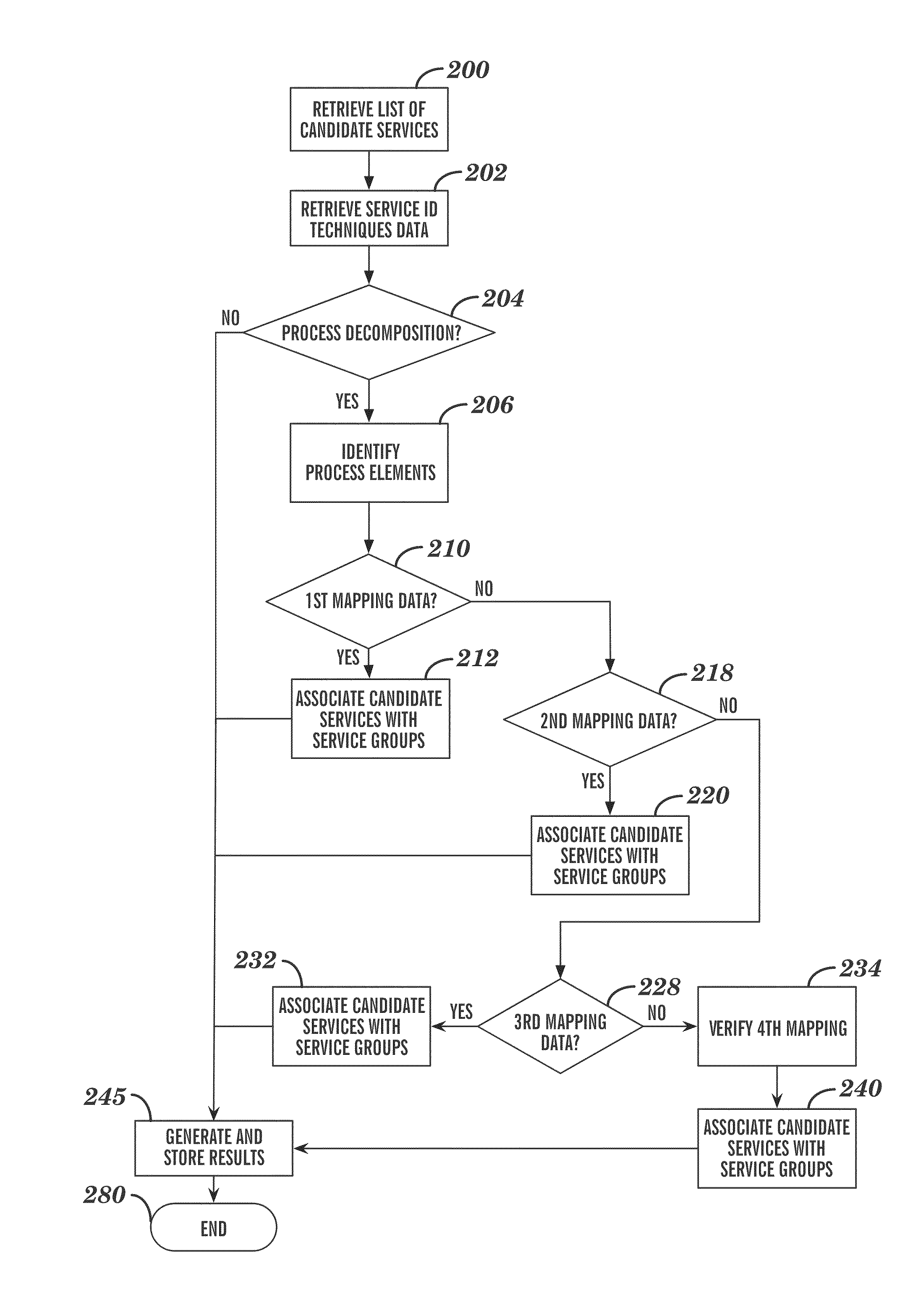Service grouping and allocation method and system
a service and service technology, applied in the field of system for grouping and allocating services, can solve the problems of inefficient process for arranging and modifying data and little flexibility
- Summary
- Abstract
- Description
- Claims
- Application Information
AI Technical Summary
Benefits of technology
Problems solved by technology
Method used
Image
Examples
example 1
[0035]1. Business process model elements (e.g., see business process model elements in FIG. 7, infra) are mapped with corresponding business components (e.g., see business components in FIG. 6, infra) in a component business model (CBM). A CBM comprises business competencies, business components, and business services that together describe an enterprise or industry. In this example, a granularity of business components and functional areas comprise a one-to-one relationship.[0036]A. Business component: Account & policy administration.[0037]B. Business processes: Manage accounts, open account, process transactions, close account.
2. An SOA architect identifies the following candidate services (e.g., see candidate services in FIG. 8, infra) from process models:[0038]A. Candidate services: Manage accounts, open account, process transactions, close account.
3. The SOA architect identifies the following candidate service from additional sources (e.g., from an information model).[0039]A. C...
example 2
1. 1. In this example, a granularity of business components and functional areas comprise a one-to-many relationship.
[0062]A. Business component: account & policy administration.[0063]B. Business processes: manage accounts, open account, process transactions, close account, manage policies, create policy, renew policy, and reinstate policy.
2. An SOA architect: creates the following functional areas from business components, maps business processes to functional areas, and identifies candidate services from process models.[0064]A. Business component: account & policy administration.[0065]B. Functional areas: account administration, policy administration.[0066]C. Business processes: manage accounts, open account, process transactions, close account are mapped to an account administration functional area.[0067]D. Business processes: manage policies, create policy, renew policy, and reinstate policy are mapped to a policy administration functional area.[0068]E. Candidate services: manag...
example 3
1. Business process model elements are mapped with corresponding business components in a CBM. In this example, a granularity of business components and functional areas comprise a one-to-one relationship.
[0100]A. Business component: Account & policy administration.[0101]B. Business processes: Manage accounts, open account, process transactions, close account.
2. An SOA architect identifies candidate services from process models, exposes some of the candidate services as real services, creates subsystems from functional areas, and creates service components.[0102]A. Candidate services: manage accounts, open account, process transactions, close account.[0103]B. Exposed services: manage accounts, process transactions.[0104]C. Functional area: account & policy administration.[0105]D. Subsystem: account & policy administration.[0106]E. Service component: account & policy administration.
3. The SOA architect invokes an automated service component allocation algorithm through a user interfa...
PUM
 Login to View More
Login to View More Abstract
Description
Claims
Application Information
 Login to View More
Login to View More - R&D
- Intellectual Property
- Life Sciences
- Materials
- Tech Scout
- Unparalleled Data Quality
- Higher Quality Content
- 60% Fewer Hallucinations
Browse by: Latest US Patents, China's latest patents, Technical Efficacy Thesaurus, Application Domain, Technology Topic, Popular Technical Reports.
© 2025 PatSnap. All rights reserved.Legal|Privacy policy|Modern Slavery Act Transparency Statement|Sitemap|About US| Contact US: help@patsnap.com



